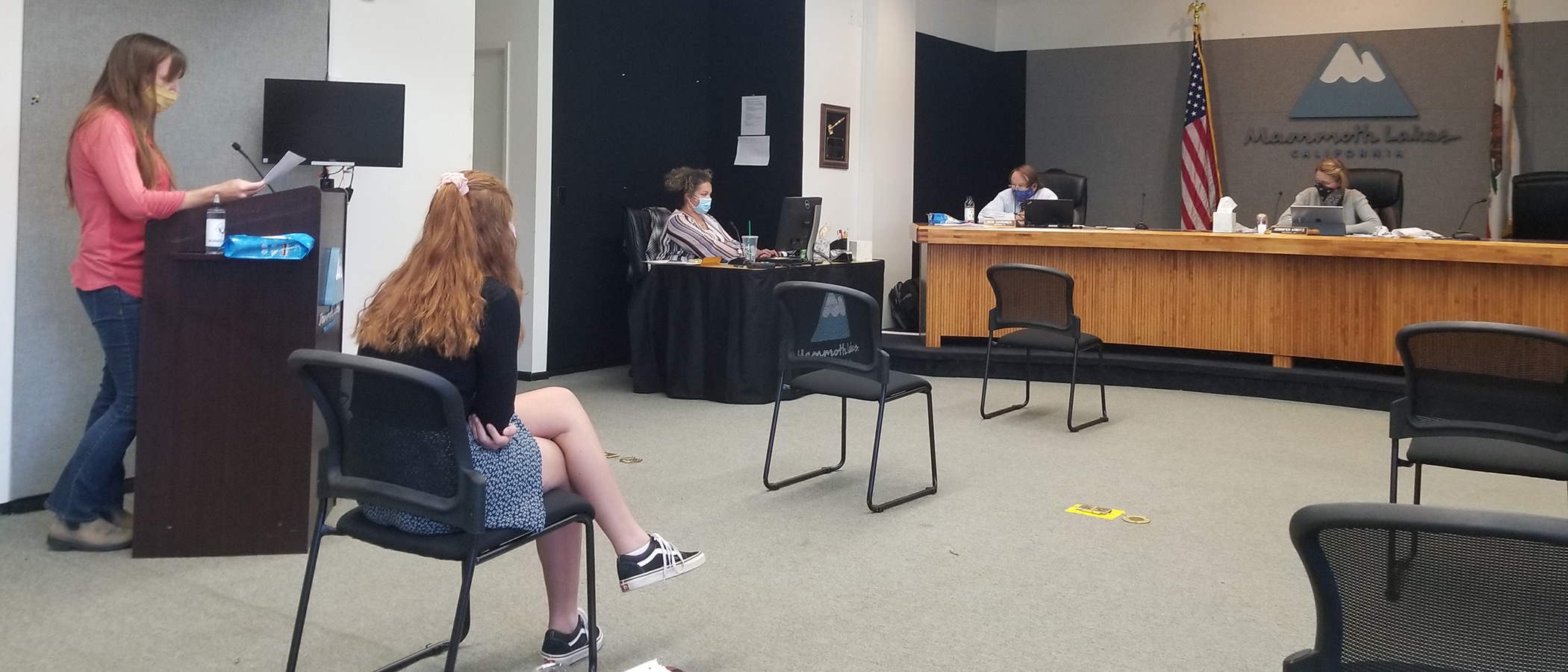
This Thursday, August 6, at 10:00am the Mono County Board of Supervisors will conduct a final hearing on the Tioga Inn project. After a lengthy hearing in June the Board gave the developer and staff direction to bring back significant design improvements to address visual impacts, fire concerns, and to add a safe pedestrian route between Lee Vining and the project site.
The revised project before the Board shows some progress on addressing visual impacts but falls woefully short on safety and fire protection. For example, the final proposal does not include a safe pedestrian route, isolating future residents from Lee Vining and providing no way for students to walk to school. The original five significant adverse impacts remain with the project, and Board must vote to accept these impacts without mitigation if they vote to approve the project this Thursday.
The developer’s new “Alternative #7-Hybrid Plan” is identified as the “Preferred Alternative.” How is it different from what the Board considered in late June?
Visual impacts remain
There are development footprint areas that will be open for yet-to-be-determined building configurations that must meet specific criteria, such as one-story buildings that do not exceed 100 units/150 bedrooms. These footprints will be screened by tree plantings that will be maintained for height, number, and species of trees.
While this approach will likely be an improvement over the previous two-story Alternative 6 the Board considered a month ago, there are no standards that require screening from South Tufa—the most visited and high-impact part of Mono Lake. Further, after conceding that last month’s visual analysis understated structure visibility, there is no third-party detailed visual analysis for the Hybrid Plan, and the current analysis does not provide enough information or confidence that all buildings will be sufficiently screened. The project concedes that impacts to views due to light and glare during the day and night will remain.
This current visual mitigation effort, while encouraging, should have been the starting point of this project. Like a student that rushes to get a big research paper done the night before it is due, an “A” grade is well out of reach. Mono County, as well as millions of visitors to Mono Lake, would see the results of this poor planning for years to come.
Safe pedestrian route nonexistent
While the visual alternative might be at best a “C” grade, the project receives an “F” when it comes to addressing another significant impact: safety. While a safe pedestrian route connecting Lee Vining and the future Tioga Inn site appears feasible, the project proposes only that the “property owner and County shall work collaboratively with SCE, Caltrans, and the local community to pursue options for a pedestrian/bicycle connection to Lee Vining” starting in 2021.
Without a new safe route the project forces residents, including kids, to walk next to traffic on Highway 395 to get to Lee Vining for school, groceries, and community services. A safe pedestrian route remains uncertain and the safety impact to kids, residents, and future visitors remains significantly adverse. Providing safe and convenient pedestrian access is a core policy of the Mono Basin Community Plan, now adopted into the Mono County General Plan, yet this project has stubbornly avoided making this mitigation a priority.
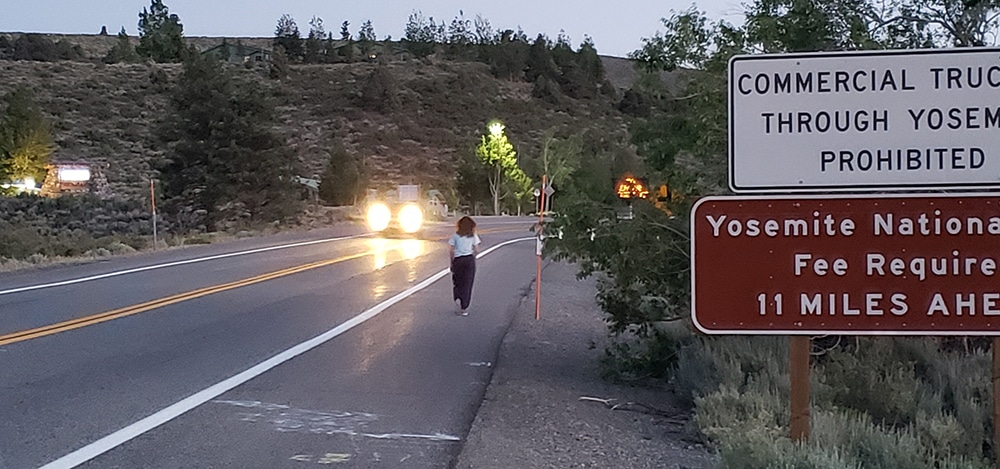
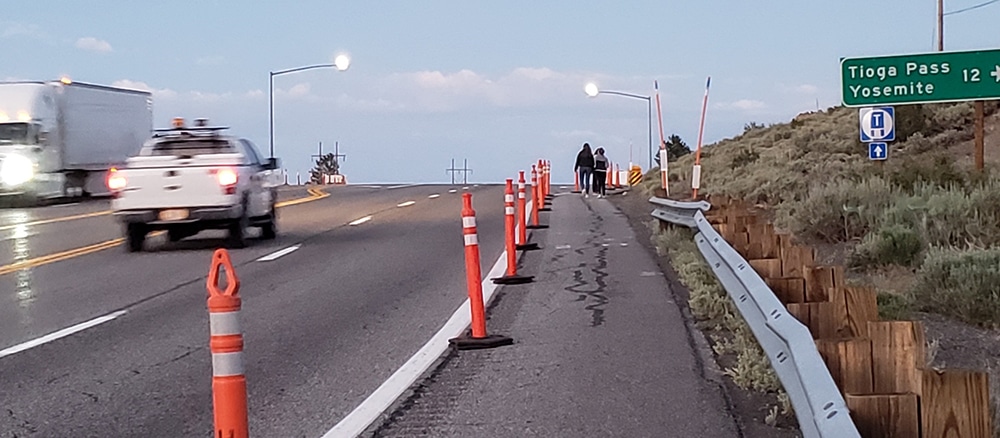
Ironically, the developer is asking the Board to vote for a package that declares a walkable connection to town infeasible, and then suggests it is feasible and promises to study the matter at a later date. Planning for a walkable community connection (a key element of the local community vision for Lee Vining) should have been a starting point for the project.
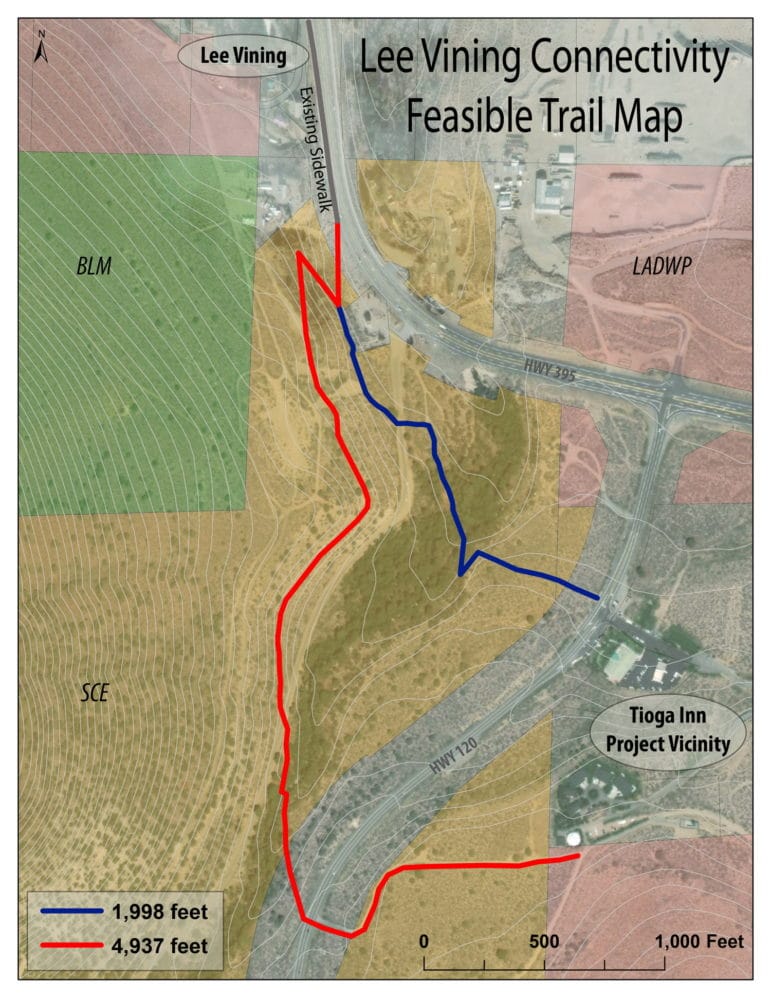
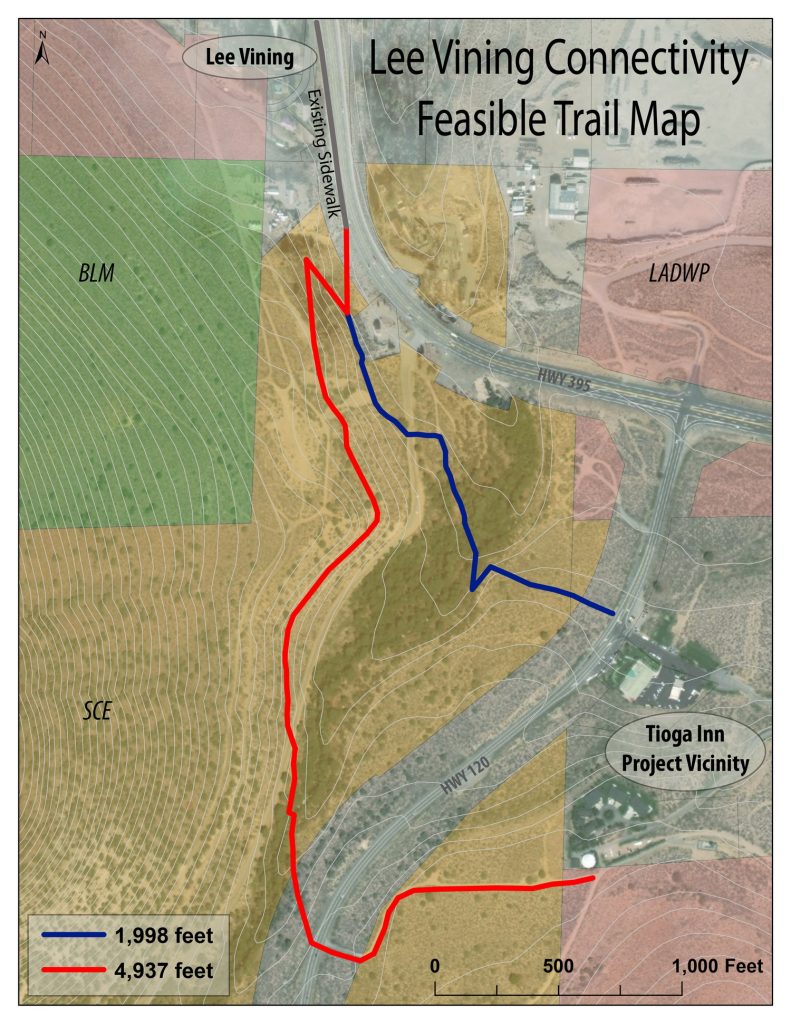 The Mono Lake Committee’s feasibility study map of potential pedestrian trails to connect the Tioga Inn project with the town of Lee Vining for students walking to school, community members, and visitors. Mapping by Robbie Di Paolo.
The Mono Lake Committee’s feasibility study map of potential pedestrian trails to connect the Tioga Inn project with the town of Lee Vining for students walking to school, community members, and visitors. Mapping by Robbie Di Paolo. Fire Department safety and capacity issues unaddressed
Emergency routes for evacuation of the project in case of wildfire are a critical concern raised by the Lee Vining Fire Department. The Fire Department requested a safety route exiting onto Highway 395, away from the highest wind-driven wildfire threat. The proposal going before the Board still does not include the requested safety route.
Impacts to the Lee Vining Fire Department have also still not been addressed. The Tioga Inn project currently promises a mere $37,000 in one-time development impact fees and a paltry $250 in annual tax revenue for the Fire Department to expand its capacity to cope with hundreds of new residents at what is essentially to be a new town site. The project fails to offer substantive support for real economic and capacity challenges faced by a volunteer fire department that already works selflessly and at maximum capacity to serve the community and annual influx of visitors.
Hybrid plan too little too late
The Mono Lake Committee does not see the Alternative #7-Hybrid Plan as a fully formed project. The Board of Supervisors did not get the important improvements they asked for at the June hearing and now have to consider the flawed project in front of them once again. The original five, significant adverse impacts still remain with the project, and the changes to the plan have not produced a project that respects the local community and the scenic Mono Basin. The Committee will urge the Board to vote no on the final proposal.
Hearing details
The meeting on Thursday will be conducted entirely over Zoom in a public hearing format. You can submit written comments via email by 10:00am on August 6, and they will be transmitted to the Board. The public can also comment in person via Zoom. The meeting agenda and 157-page materials packet can be accessed here.
Over 1,000 comments have already been submitted in the four years since this project launched. If you have commented before, you have good grounds to share your evaluation of the final project and whether it addresses the concerns you have raised. If you are new to this process you can still comment; keep in mind that the Board will be specifically considering how the current alternative satisfies their earlier direction from the June 29–30 hearing, and comments will be most effective in that context.
Top photo by Rose Nelson.
